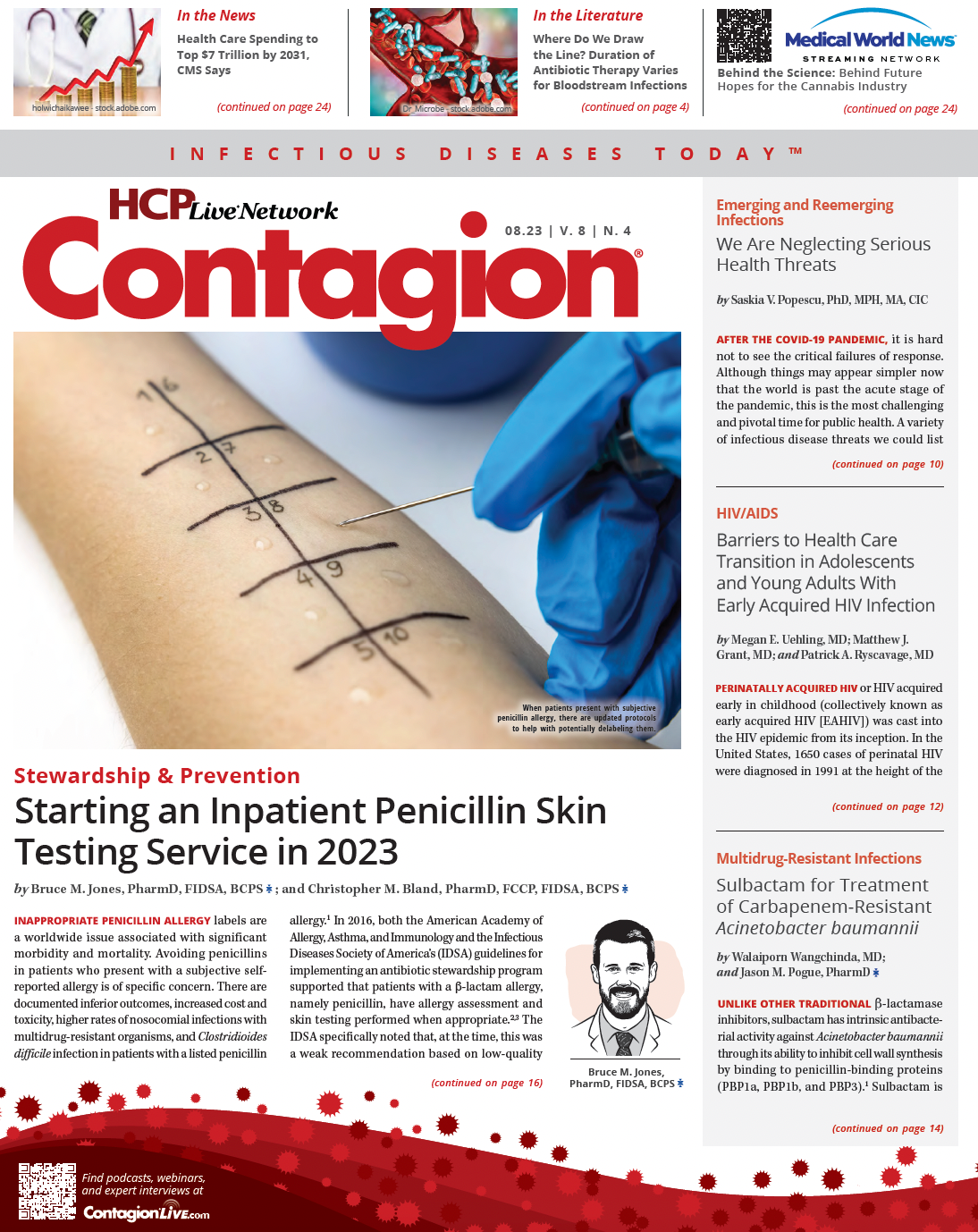Guess Who’s Back Again? Malaria
With recent reports of this vector-borne illness in the continental United States, there is concern this might become endemic in the country again.

The news of local malaria transmission in Florida and Texas has been unsettling.1 Malaria is not something that most Americans think about, at least until they consider international travel, a luxury that was not always the case. Many species of Anopheles mosquitoes that transmit malaria parasites are widespread in the United States.2 It took a concerted effort to eliminate malaria transmission in the US, one that is interwoven through our history. It includes the origin of what is now the Centers for Disease Control and Prevention (CDC), a successor to the Office of Malaria Control in War Areas, which was formed to address malaria and other vector-borne diseases in the southeastern US. The CDC was headquartered in Atlanta, Georgia, in part because the Southeast was the epicenter of malaria cases in the US.3 Our malaria history also includes the use of DDT as a pesticide, which caused damage to raptor populations. Ultimately, the efforts were successful, and malaria was eliminated as an endemic pathogen in the US in the early 1950s. The approximately 2000 cases typically seen each year are largely in travelers returning from endemic countries.4
Malaria is a leading cause of death globally, even though it is uncommon in many highly populated areas of the world. Most of these deaths occur in sub-Saharan Africa, where a perfect storm of an efficient breed of mosquito, a climate enabling year-round transmission, and endemic Plasmodium falciparum, which causes the most severe cases of malaria, come together to make it a top cause of death.5 Malaria cases occur frequently in some other parts of the world, most notably in South America and southern Asia, but mortality is lower.
Fortunately, efforts to blunt the impact of malaria on humanity have borne fruit. Though over 600,000 people died of malaria in 2020, this is a 36% decrease from 2010.6 More recently, vaccines against some types of malaria have become available. The first, Mosquirix (RTS,S), became available in 2021 and has been administered to 1.7 million children in Ghana, Kenya, and Malawi.7 The World Health Organization says that community demand in those countries has been high, even factoring in the need for additional visits to vaccination clinics due to the 4-dose schedule of the vaccine. It is an imperfect vaccine, with modest and short-lived efficacy against severe malaria in its phase 3 trial; 55% vaccine efficacy was seen in children aged 5 to 17 months, and after a booster given 18 months after the first 3 doses, efficacy against symptomatic disease was 36% and against severe disease was 29% in the next 4 years. Still, given the enormous burden of disease and the high severity of illness in young children, this represents thousands of lives saved.
A second vaccine for malaria (R21/MM) has been developed and is being studied. The first reports of efficacy came from a study of 450 children aged 5 to 17 months in Burkina Faso.8 Efficacy rates were 74% and 77% at 1 year in lower- and higher-dose groups, respectively. If this vaccine shows this level of efficacy in larger studies, it would be a significant boost to efforts to vaccinate African children, both since demand for Mosquirix has outstripped supply and R21/MM may end up being the more effective option.
Local transmission of malaria in the US is uncommon but does occur; previously most recently in 2003.1 The cases in the news today highlight both the victories we have achieved in public health as well as point out our vulnerability to future transmission if we let our guard down. The mosquitoes are still here, but Americans have public health initiatives to thank for our relative protection from this disease.
References
1. Cosdon N. For the first tme in 20 years, US reports 7 locally acquired malaria cases. Contagion. July 10, 2023 https://www.contagionlive.com/view/for-the-first-time-in-20-years-us-reports-7-locally-acquired-malaria-cases
2. Mosquitos in the United States. Centers for Disease Control and Prevention. Update March 5, 2020. Accessed July 11, 2023 https://www.cdc.gov/mosquitoes/about/mosquitoes-in-the-us.html.
3. CDC’s Origins and Malaria. Centers for Disease Control and Prevention. Update July 23, 2018. Accessed July 11, 2023 https://www.cdc.gov/malaria/about/history/history_cdc.html
4. CDC and Malaria. Centers for Disease Control and Prevention. Updated June 27, 2023. Accessed July 11, 2023 https://www.cdc.gov/malaria/about/activities.html
5. Rao C, Lopez AD, Hemed Y. Causes of Death. In: Jamison DT, Feachem RG, Makgoba MW, et al., editors. Disease and Mortality in Sub-Saharan Africa. 2nd edition. Washington (DC): The International Bank for Reconstruction and Development / The World Bank; 2006. Chapter 5. Available from: https://www.ncbi.nlm.nih.gov/books/NBK2298/
6. Malaria’s Impact Worldwide. Centers for Disease Control and Prevention. Updated December 16, 2021. Accessed July 11, 2023 https://www.cdc.gov/malaria/malaria_worldwide/impact.html
7. RTS,S malaria vaccine. World Health Organization. Updated July 7, 2023. Accessed July 11, 2023 https://www.who.int/news-room/questions-and-answers/item/q-a-on-rts-s-malaria-vaccine
8.Datoo M, Magloire-Natama H. High Efficacy of a Low Dose Candidate Malaria Vaccine, R21 in 1 Adjuvant Matrix-M™, with Seasonal Administration to Children in Burkina Faso. The Lancet. Posted April 20, 2021. Accessed July 11, 2023 https://papers.ssrn.com/sol3/papers.cfm?abstract_id=3830681

Newsletter
Stay ahead of emerging infectious disease threats with expert insights and breaking research. Subscribe now to get updates delivered straight to your inbox.
